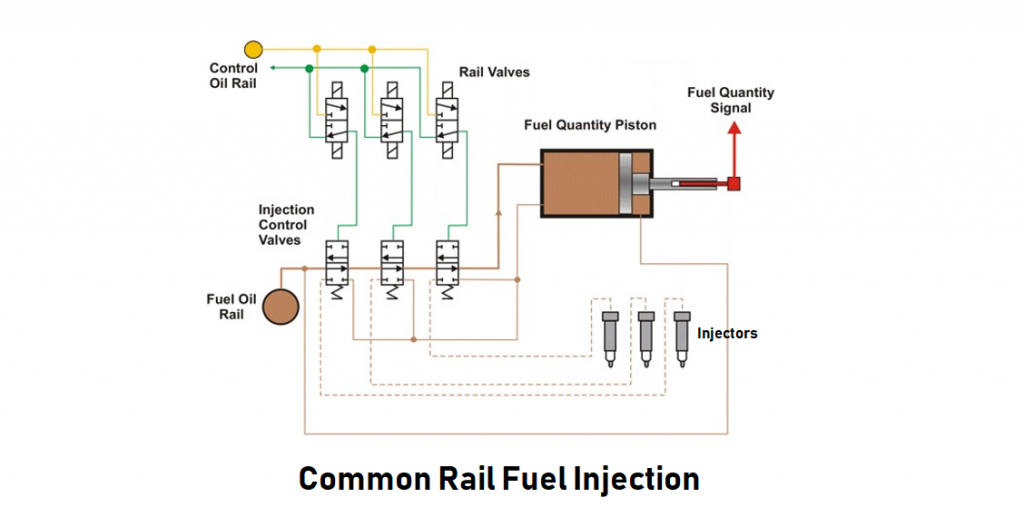Common rail fuel injection have been discussed in this article for marine engines whether main engine for propulsion or diesel generators.
This kind of fuel injection system has its own pros and cons and will be studying this in detail as how this system works. Such kind of arrangement is already being used in RT Flex version of Sulzer engines. And have been in use since 2001. So let’s discuss this in detail.
Common Rail Fuel Injection
Common rail as name suggest that pressurized oil is pumped into a common manifold by all the fuel pumps and then this high pressure fuel oil is injected to individual units by the mechanically operated valves.
Pumps takes their pushing force from the cams that are operated by the chain gear drives. For a engine of 10 units, example, there will not be 10 fuel pumps. It will be somewhere around 5-6 depending on the bore and fuel rail pressure. Generally the rail pressure is maintained around 1000 to 1100 bar pressure.
Below diagram shows the proper arrangement for this kind of system. All the fuel pumps will pump fuel into a common chamber called as fuel rail and then from this fuel rail, mechanical operated valves which are fast operated solenoid valve injects fuel oil in to the individual fuel injector.

One thing which is interesting here to see is that at lower speed, you can just send fuel to only one of the units and so on. This kind of gives more control over the fuel injector for sure.
Rail is always kept at a very high pressure so that none of the unit is devoid of fuel and fast injection takes place as soon the manual valve opens.
Safety features like solenoid operated safety valve is provided in the common chamber where oil is pumped by the all the fuel pumps. And heating arrangement for the rail is provided separately to heat fuel and also keep it hot when engine is not running.
Since it is a common rail, if one of the fuel pumps does not work properly, it can be isolated easily and it won’t affect any of the other units. And also they don’t need to operate at a high pressure. Just need to maintain specified pressure.
Advantages of Common Rail System
- Numbers of fuel pumps required are less as compared to the conventional system. Malfunction of timing of fuel pump or pumping action won’t affect one unit. No need to cut off one unit because of malfunctioning of fuel pump
- Better control over fuel injector to each injector.
- Timings are much better regulated as compared to the conventional system.
Disadvantage
- Extra maintenance for injection control units and more electronics involved.
- At the start of engine, rail pressure is not much as no pumping action by the fuel pumps. So, this will sometimes lead to fail start, if air kick has not been able to generate good pressure in the rail.
- Extra weight due to heavy rail
- More heating required as fuel rail needs to be heated up all the time.
- Extra man power to maintain the complex ICU and electronics



